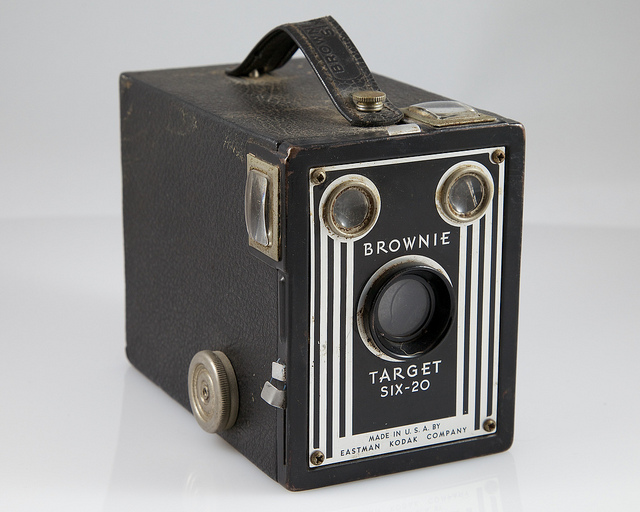Like this column? rabble is reader-supported journalism. Chip in to keep stories like these coming.
It was a simple camera with a tiny glass lens. You took a picture by pointing it at a subject and pressing a single button. The camera did the rest, including introducing amateur photographers to the joy of taking pictures they could easily share with friends and family, or send around the world.
The year was 1888 and the Kodak Camera was born. Now 128 years later, it is instructive to consider that photographic device, and its progeny. Back then the early Kodak products rivalled the iPhone for popularity and impact on photography.
In fact, before the Kodak Camera there was little in the way of truly amateur photography. Early photographic equipment was expensive, large, complex and required a chemist’s patience and know-how to turn light-sensitive glass plates into visible images. For the most part, the gear had remained the tools of professionals or enthusiastic early adopters — “photo fiends” as they were called. That’s no surprise since photography itself had only been introduced in 1839 with the invention of the daguerreotype process and the bulky Giroux and Susse cameras which used it to create one-of-a-kind images.
The Kodak Camera, manufactured by the Eastman Dry-Plate and Film Company, was something new. It was a box with a lens and shutter and a novel roll holder for paper-based film. Once the 100 circular exposures were made on the camera’s paper roll, the whole device was sent back to the Eastman for development.
Unfortunately the camera didn’t sell well, mostly because it cost about $565 in today’s dollars. Even the Pocket Kodak, introduced in 1895 as an everyman’s device, only sold 100,000 that year.
Then came the Brownie, the camera perhaps closest to the iPhone in impact.
In 1898, George Eastman, head of what was now called Eastman Kodak, charged a lead camera designer, Frank Brownell, with the task of coming up with the cheapest camera possible. One that even school children could afford. One that was dead simple to use. The result was the Brownie.
The camera was marketed to women and children. The Brownie name came from Scottish wood sprites and the Brownie packaging was adorned with illustrations of brownies by the Canadian artist Palmer Cox.
The first version was little more than a cardboard box with a single element lens and a mechanism to expose and advance six photos. It cost a dollar. A roll of film went for a quarter. It sold as fast as Eastman Kodak could make them, a problem Apple still faces today. More importantly, like smartphones, it turned everyone into a photographer.
Boys and girls everywhere joined the Brownie Kodak Club and the little cardboard camera was owned by families of every social strata. In its time it captured as many birthday parties, picnics and vacations as the iPhone did in its first year.
Like the first iPhone, the Kodak camera and the Brownie were disruptive innovations, as was the unique sales system Eastman used to push the company’s film and developing services.
And, like the iPhone, the Brownie went through a number of incremental improvements before it reached its zenith. It’s easy to forget that the first iPhone sold only 1.4 million units in 2007. That pales in comparison to the 231 million it would sell only eight years later.
In 1994 Apple introduced the QuickTake 100, a digital camera that was not a hit, but which helped usher in the era of digital photography for the masses. That camera was made for Apple by Eastman Kodak, even though Kodak was struggling with adapting to the switch from analog to digital photography.
There is a final, sobering lesson from the Kodak camera and the Brownie. In 2014 Kodak filed for bankruptcy protection. It managed to restructure itself and now focuses on industrial photography processes. Its snapshots-for-the-masses days are gone forever. In the early 1900s no one could have imagined Kodak could be so unseated. That happens when you don’t think outside the box camera.
Listen to an audio version of this column, read by the author.
Wayne MacPhail has been a print and online journalist for 25 years, and is a long-time writer for rabble.ca on technology and the Internet.
Photo: Kevin Stanchfield/flickr
Like this column? rabble is reader-supported journalism. Chip in to keep stories like these coming.



